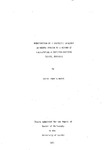REDEFINITION OF A SYNTACTIC CATEGORYIN MODERN SPANISH AS A METHOD OF FACILITATING A COMPUTER-ASSISTED TEXTUAL ANALYSIS
| dc.contributor.author | Hunns, Colin Francis | |
| dc.contributor.other | School of Engineering, Computing and Mathematics | en_US |
| dc.date.accessioned | 2013-09-13T12:44:30Z | |
| dc.date.available | 2013-09-13T12:44:30Z | |
| dc.date.issued | 1977 | |
| dc.identifier | NOT AVAILABLE | en_US |
| dc.identifier.uri | http://hdl.handle.net/10026.1/1714 | |
| dc.description.abstract |
This thesis represents an attempt to produce machinery which will render a computer-assisted textual analysis viable for modern Spanish. To this end, it endeavours to provide a totally new definition for the categorial term "article". The categories of both articles, as traditionally recognized, and those of the concomitant relative pronouns and object pronouns, are subjected to a synoptic analysis based on a consideration of the syntactic, semantic, and morphological features which all these part s of speech have in common. The first chapter defends the categorial status of the indefinite article and deals with the articles in the nounphrase. Chapter two discusses the articles in the relative clause, in terms of the grammatical information which they provide, and the grammatical function which they perform there; in the light of this, an analysis is made of the types of relative clause in Spanish, and a new clause-type is established which depends upon the article. Chapter three examines the verbphrase and explores the relationship between the articles and certain object pronouns, and attempts to justify the theoretical assimilation of these pronouns to articles. A final format of the distinctive feature matrix which has been evolving up to that point, based on the syntactico-semantic analysis, is established. Chapter four compares the morphological characteristics that are common to articles and pronouns, and reduces these to interrelated formulae. Chapter five utilize s these formulae to devise a prototype computer program based on a subcorpus of a 36,287 word text, and print-outs are provided. The data for the thesis as a whole is based on a corpus of one million words. The conclusion suggests that the article and its indicated concomitants, enjoying a high degree of frequency, may represent the key to a computer program widely applicable t o syntactic problems of modern Spanish. | |
| dc.language.iso | en | en_US |
| dc.publisher | University of Plymouth | en_US |
| dc.title | REDEFINITION OF A SYNTACTIC CATEGORYIN MODERN SPANISH AS A METHOD OF FACILITATING A COMPUTER-ASSISTED TEXTUAL ANALYSIS | en_US |
| dc.type | Thesis | |
| plymouth.version | Full version | en_US |
| dc.identifier.doi | http://dx.doi.org/10.24382/4781 | |
| dc.identifier.doi | http://dx.doi.org/10.24382/4781 |
Files in this item
This item appears in the following Collection(s)
-
01 Research Theses Main Collection
Research Theses Main


